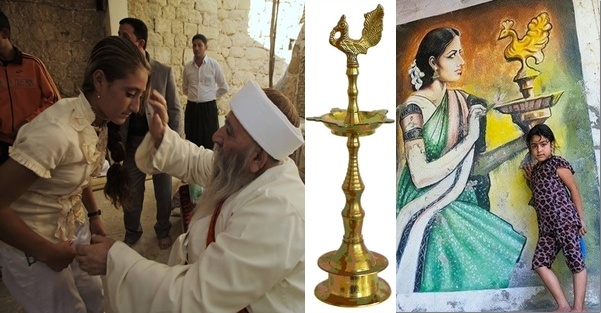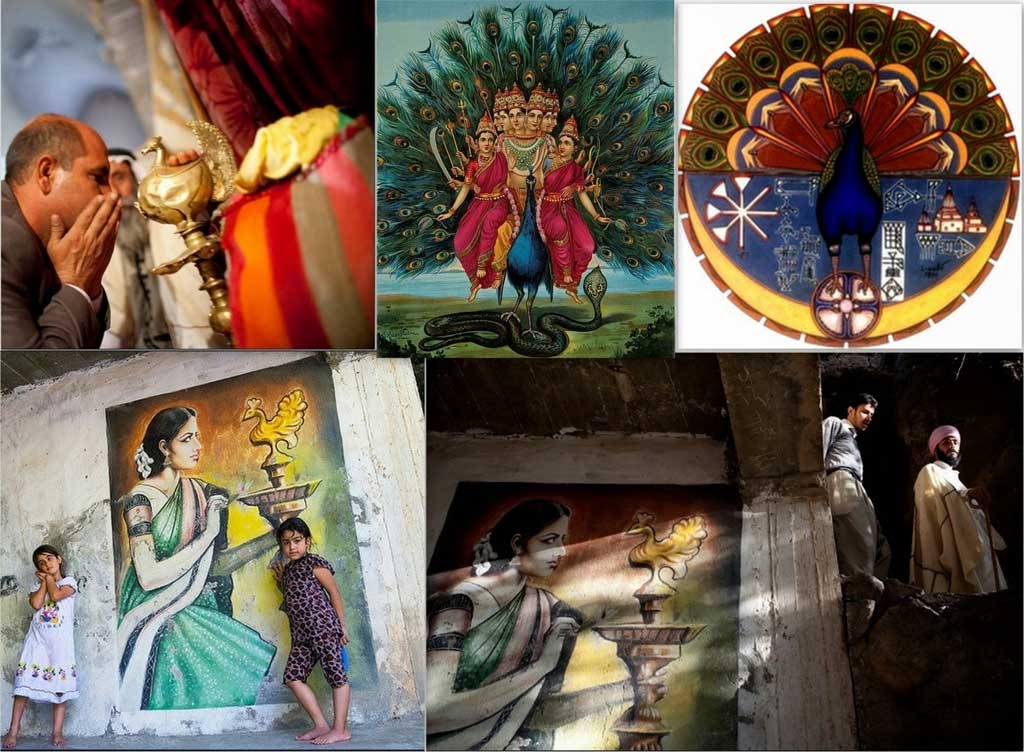Yezidi and Hindu Connection: Cultural and Religious Similarities

In the Lok Manthan program held in Bhagyanagar (Telangana), not only religious leaders from India but also from different countries who have similarities with Indian (Hindu) culture and their followers came, one of them is the Yezidi sect from Armenia. If you read further, you will know how many similarities we have.
The Yezidis and Hindus, though separated by geography, share intriguing cultural and religious connections. These similarities suggest ancient interactions and a shared reverence for universal principles of spirituality, nature, and morality.
Belief in One Supreme God and Divine Manifestations
Both the Yezidi and Hindu religions recognize a single supreme God, who is beyond human comprehension.
In Yezidi belief, God is the Creator and ruler of the universe, who delegates the world’s governance to Malakê Tawus (the Peacock Angel).
In Hinduism, Brahman is the ultimate, formless reality, while divine manifestations such as Vishnu and Shiva play roles in the maintenance and transformation of the cosmos.
This shared concept of a supreme deity with divine intermediaries highlights a common theological foundation.
Reverence for the Peacock
The Peacock Angel (Malakê Tawus) is central to Yezidi spirituality, symbolizing beauty, wisdom, and divine authority. Similarly, in Hinduism, the peacock is sacred and associated with Lord Murugan (Kartikeya), the god of war and victory, as well as Goddess Saraswati, who represents wisdom and learning.

The use of the peacock as a symbol of divinity and spiritual connection underscores a shared cultural reverence.
Focus on Nature and Cosmic Harmony
Both Yezidi and Hindu traditions emphasize the harmony between humanity, nature, and the cosmos.
Yezidi teachings stress balance and respect for natural elements, with rituals and prayers aligned with the cycles of nature.
Hinduism also venerates natural elements, including rivers, mountains, and celestial bodies, viewing them as sacred and interconnected with spiritual life.
This shared ecological spirituality reflects a common understanding of humanity’s place within the natural world.
The Role of Rituals and Festivals
Both cultures are rich in rituals and festivals, often marked by prayers, offerings, music, and dance.
Yezidi festivals, such as Cejna Êzî (Ezi’s Feast) and the New Year celebration Çarşema Sor (Red Wednesday), honor their religious traditions and seasonal cycles.
Hindu festivals like Diwali (Festival of Lights) and Holi (Festival of Colors) celebrate divine victories, renewal, and the cycles of life.
These festivals serve to unite communities and reinforce cultural and religious identity.
Caste and Social Structure
The Yezidi community is organized into three hereditary castes—Sheikhs, Pirs, and Murids—with specific roles in religious and social life. Similarly, Hindu society has traditionally been structured into varnas (castes), such as Brahmins (priests), Kshatriyas (warriors), Vaishyas (traders), and Shudras (laborers).
While both systems emphasize duty and social order, they have evolved over time and are interpreted differently in contemporary contexts.
Sacred Fire and Spiritual Energy
Fire holds a sacred place in both traditions: Yezidis light candles in their shrines as symbols of divine light and guidance. Hindus revere fire (Agni) as a purifier and medium for offerings to the divine during rituals.
This shared veneration of fire signifies a connection to spiritual energy and transformation.
Oral Tradition and Preservation of Heritage
Both the Yezidi and Hindu cultures have a rich oral tradition, with songs, hymns, and epics passed down through generations. These oral traditions preserve history, theology, and cultural values.
For Yezidis, religious hymns like Qewls encapsulate their spiritual teachings. In Hinduism, scriptures such as the Vedas and Upanishads were initially preserved orally before being written down.
Sacred Symbols and Pilgrimage Sites
Both faiths cherish pilgrimage and sacred sites: For Yezidis, Lalish is the holiest site, a place of pilgrimage and spiritual renewal. For Hindus, sacred sites like Varanasi and Mount Kailash are destinations of profound spiritual significance.
Additionally, both traditions use sacred symbols, such as the peacock or the sun, to represent divine connection and cosmic order.
Conclusion
The Yezidi and Hindu religions, though distinct, share profound cultural and spiritual similarities. Their reverence for a supreme being, connection to nature, sacred rituals, and symbolic traditions point to ancient shared values and possibly interconnected histories. These parallels remind us of the universal threads that link humanity across time and geography, fostering mutual respect and understanding.
Article by
Alekh Sharma
Younginker
Advocate
Gwalior, Madhya Pradesh